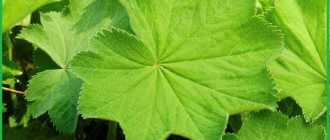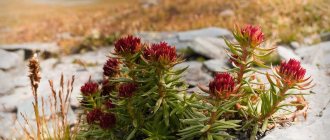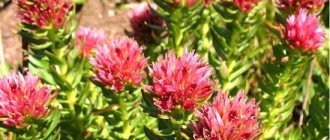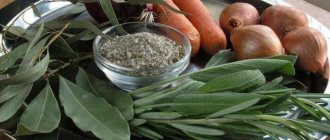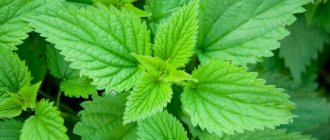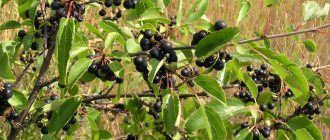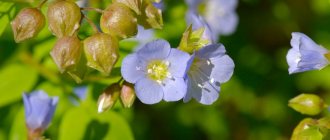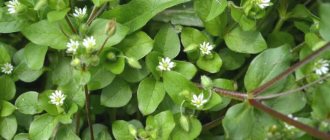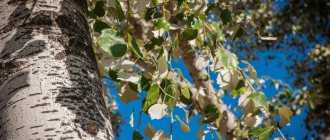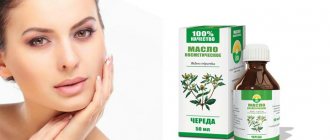The leaves of Ginkgo biloba have gained a reputation as a unique remedy for stimulating brain activity. Numerous studies have shown that the plant increases the viability of nerve cells, improves microcirculation, memory, and stimulates cognitive processes. It is thanks to these properties that manufacturers began to make dietary supplements (BAS), drinks, and vitamin complexes based on it. But from the leaves of Ginkgo biloba you can also prepare tinctures, decoctions, teas, etc. at home. Let’s take a closer look at the instructions for using parts of this tree.
pharmachologic effect
The drug is of plant origin, normalizes metabolism in cells, rheological properties of blood and microcirculation.
Improves cerebral circulation and supply of oxygen and glucose to the brain, prevents red blood cell aggregation, and inhibits platelet activation factor. It has a dose-dependent regulatory effect on the vascular system, stimulates the production of an endothelium-dependent relaxing factor, dilates small arteries, increases the tone of the veins, thereby regulating blood filling of the vessels. Reduces the permeability of the vascular wall (anti-edematous effect - both at the level of the brain and at the periphery).
It has an antithrombotic effect (due to the stabilization of platelet and erythrocyte membranes, the effect on the synthesis of Pg, reducing the effect of biologically active substances and platelet-activating factor). Prevents the formation of free radicals and lipid peroxidation of cell membranes. Normalizes the release, re-absorption and catabolism of neurotransmitters (norepinephrine, dopamine, acetylcholine) and their ability to connect with receptors. Prevents the increase in fibrinolytic activity of the blood.
It has an antihypoxic effect, improves metabolism in organs and tissues, promotes the accumulation of macroergs in cells, increases the utilization of oxygen and glucose, and normalizes mediator processes in the central nervous system.
Chemical composition and beneficial properties
The Ginkgo biloba tree is the only representative of the Jurassic flora that has survived to this day. More than 150 million years ago, this plant was found even in Siberia and in central Russia. Today, the relict tree is cultivated in China, Japan, as well as in Western Europe. It grows in the USA and on the southern coast of Crimea.
Fresh or dried leaves, branches or seeds of the plant are widely used in traditional medicine. Eastern healers make tinctures based on them to treat coughs, brain disorders and quick recovery from illnesses.
The chemical composition of Ginkgo biloba is unique. Green leaves contain bioflavonoids, quercetin, kaempferol, alkaloids, terpene lactones and other beneficial substances. They also contain trace elements:
- iron;
- calcium;
- magnesium;
- phosphorus;
- chromium;
- copper;
- manganese and selenium.
Dry leaves contain flavones in a concentration of 0.3-0.5, flavonoids, terpenes, proanthocyanidins, natural acids, isorhamnetin triglycosides.
Attention! Preparations based on ginkgo biloba have antihypoxic and antioxidant properties, and also improve blood fluidity, enhance microcirculation, and prevent the formation of blood clots.
Gingko is recommended to be taken to prevent neurological defects, cerebral edema, cerebral ischemia, as well as:
- to improve cellular nutrition and respiration;
- with renal failure;
- to normalize the metabolism of serotonin, dopamine and norepinephrine.
The plant also helps with atherosclerosis - it reduces the level of bad cholesterol, eliminates spasm of blood vessels, and expands the lumen of the arteries. It can also be used by healthy people in times of emotional overstrain or stress.
Pharmacokinetics
After oral administration of ginkgo extract, the terpene lactones (ginkgolide A, ginkgolide B and bilobalide) have high bioavailability, which is 100% (98%) for ginkgolide A, 93% (79%) for ginkgolide B and 72% for bilobalide.
After administration of 80 mg of extract, maximum plasma concentrations are: 15 ng/ml day for ginkgolide A, 4 ng/ml for ginkgolide B and approximately 12 ng/ml for bilobalide.
The half-life is 3.9 hours (ginkgolide A), 7 hours (ginkgolide B) and 3.2 hours (bilobalide).
Plasma protein binding is: 43% for ginkgolide A, 47% for ginkgolide B and 67% for bilobalide.
Traditional medicine recipes: methods of preparation and use
In folk medicine, inkgo biloba raw materials are used as a stimulant and also a general tonic medicine. Water and alcohol infusions are prepared from it, and powder is made. The drugs are used for diseases of the respiratory tract, anemia, joint pathologies, brain disorders, etc.
Attention! Ginkgo herbal remedies are taken in the morning, during or after meals.
Alcohol tincture (extract) from leaves
An alcohol tincture based on biloba leaves is recommended for use in case of deterioration of memory, attention, cerebral circulation, hearing and vision impairment. The extract restores brain function, tones the body, and prevents vegetative-vascular dystonia. But children and pregnant women should not use the tincture, since it contains ethanol.
To prepare the product you will need:
- crushed leaves – 50 g;
- alcohol 70% – 700 ml.
The leaves are poured with alcohol, the container is sealed, then put in a dark place for two weeks. For better extraction of active substances, shake the dishes daily. The finished tincture is filtered and taken 5 ml three times a day, after dissolving in water. The course of treatment is 30 days.
There are other recipes for extracting ginkgo biloba extract:
- Green leaves are poured with vodka in a 1:1 ratio. The mixture is kept in a dark room for 14 days, filtered, then drunk 20-25 drops twice a day. This medicine is used to prevent senile changes in the brain during periods of active mental work or overwork.
- Pour 100 ml of alcohol into a container with green leaves (1 tbsp), then put it in a warm place. After 5-7 days, the infusion is filtered and used for treatment.
It is recommended to store homemade hoods in the refrigerator for no more than 2 years. The first results from using the medicine appear within a week. To obtain a long-lasting effect, courses of therapy are recommended to be repeated 3-4 times a year.
Water infusion or decoction
An aqueous infusion of the leaves and branches of Ginkgo biloba is recommended to be taken for respiratory diseases, tuberculosis, and decreased hemoglobin levels in the blood. The product also strengthens the immune system and improves the functioning of the pancreas, so doctors especially recommend its use for patients with diabetes.
Method for preparing water infusion:
Dried leaves are poured with hot, but not boiling water in a 1:1 ratio. The solution is infused under the lid until cooled, filtered and drunk 100 ml 2 times a day. The course of treatment is 28-30 days. After a two-week break, therapy can be repeated.
Method for preparing the decoction:
In a separate bowl, mix dry leaves and chopped biloba branches in a 1:1 ratio. Then 1 tbsp. l. The resulting mixture is poured with boiling water (½ liter). The solution is kept in a water bath for 10-15 minutes, cooled, and filtered.
The decoction is used to treat the respiratory system. Drink 50 ml 3 times a day until the symptoms of the disease disappear. For tuberculosis, the daily dosage of the drug is increased to 300 ml. The duration of such therapy is determined by the doctor.
Ginkgo honey
Ginkgo honey is used to improve blood supply to cerebral vessels, prevent heart attack and stroke, and treat atherosclerosis. This remedy also normalizes blood pressure, reduces the symptoms of multiple sclerosis and senile dementia, and improves the condition of people with Alzheimer's disease.
The composition is prepared according to the following recipe:
Dry, powdered leaves (500g) are combined with honey in a 1:1 ratio. The mixture is infused for three days at room temperature, stirring daily. The finished product is stored in the refrigerator.
Ginkgo honey is consumed 1 tsp. three times a day for 1 month. But this product should not be taken by people intolerant to honey.
Dry leaf powder
Ginkgo biloba leaf powder is recommended for the treatment of the following diseases:
- joint lesions;
- hypertension;
- deterioration of blood composition;
- weak immunity;
- nervous exhaustion, overwork, depression, loss of strength, chronic fatigue syndrome.
Method of preparation and treatment: the leaves are crushed in a coffee grinder, consumed 1 tsp. after meals 1 time per day, with a small amount of liquid. Treatment is carried out for 2 months, then take a break.
Attention! Ginkgo biloba leaf powder is also recommended for use for sexual weakness, increased anxiety, nervous exhaustion, headaches and to improve cognitive functions.
Tea
It is recommended to drink ginkgo biloba tea to improve the functioning of all organs and systems, as well as to restore strength after suffering any illness. The drink is made from dried leaves, which can be purchased at a pharmacy or prepared yourself. Raw materials (1 tsp) are poured with boiling water (250 ml) and drunk like regular tea. It must be used within 1 month.
You can use ready-made tea bags to brew the drink. They are used according to the instructions - one sachet is steamed in 250 ml of hot water. To improve the taste, you can add 1 tsp to the tea. honey
Indications for Ginkgo Biloba
Discirculatory encephalopathy (stroke, traumatic brain injury, old age), manifested by the following symptoms:
- decreased attention;
- weakening of memory;
- decreased intellectual abilities;
- feeling of fear;
- sleep disorders;
- disorders of peripheral circulation and microcirculation (including arteriopathy of the lower extremities);
- Raynaud's syndrome;
- neurosensory disorders (dizziness, tinnitus, hypoacusis);
- age-related macular degeneration;
- diabetic retinopathy.
Preparation and storage
Raw materials are harvested throughout the growing season. The leaves have a sour taste and a yellow or brown-green color. They are collected manually or using machinery. The most valuable is the yellow foliage obtained in the fall. It is dried in special devices. At home, you can use a dark, ventilated room or oven for drying.
Attention! Ginkgo biloba leaves should be collected only undamaged, without spots, etc.
The preparation of branches, which are used in traditional medicine recipes, is done when the shoots are still soft and tender. Dry them away from sunlight.
Ginkgo biloba seeds are collected in early or mid-autumn. They are washed, cleaned, then dried, then stored in a dark place at room temperature.
special instructions
Improvement in the condition appears 1 month after the start of treatment. If you experience frequent feelings of dizziness and tinnitus, you should consult your doctor. If there is a sudden deterioration or loss of hearing, consult a doctor immediately.
Impact on driving vehicles and machinery
Considering the possibility of developing side effects from the central nervous system, caution should be exercised when driving vehicles and other technical devices that require increased concentration and speed of psychomotor reactions.
Contraindications and precautions
Preparations based on ginkgo biloba should not be used for the following conditions:
- mental disorders;
- pregnancy and lactation;
- individual intolerance to the components present in the composition.
These are the main contraindications. But the plant can be used, but with caution, by people with hemophilia, hereditary disorders of hemostasis, and a decrease in the concentration of platelets in the blood. However, the decision to prescribe medications for these diseases is made by the doctor.
Drug interactions
The use of the drug is not recommended for patients constantly taking acetylsalicylic acid, anticoagulants (direct and indirect action), as well as drugs that reduce blood clotting.
Isolated cases of bleeding are possible in patients simultaneously taking anticoagulants; The causal relationship of these bleedings with the use of Ginkgo biloba preparations has not been confirmed.
When used with antihypertensive drugs, the antihypertensive effect may be potentiated.
